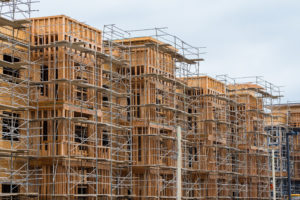 Over the last few years, I have written several blog posts about the housing shortage facing our Golden State. These articles have dealt with issues of statewide import, in addition to those specifically affecting the San Francisco Bay Area and Silicon Valley. In an effort to respond to this predicament, Governor Brown recently signed a host of bills, passed in the waning days of the California legislature’s most recent session, aimed at helping ease California’s dearth of housing, particularly “affordable housing,” with SB 2, SB 3 and SB 35 comprising the main components of this array.
Over the last few years, I have written several blog posts about the housing shortage facing our Golden State. These articles have dealt with issues of statewide import, in addition to those specifically affecting the San Francisco Bay Area and Silicon Valley. In an effort to respond to this predicament, Governor Brown recently signed a host of bills, passed in the waning days of the California legislature’s most recent session, aimed at helping ease California’s dearth of housing, particularly “affordable housing,” with SB 2, SB 3 and SB 35 comprising the main components of this array.
The result of weeks of difficult negotiations, SB 2 imposes a new document recording fee applicable to refinances and other similar matters ranging between $75 and $225 per document; this charge is projected to generate $250 million annually, which will be designated to build affordable housing. SB 3 authorizes placement of a bond on the state ballot in November 2018, with the goal of raising $3 billion for low-income development, with an additional $1 billion for home loans for veterans. Lastly, SB 35 requires local jurisdictions that have failed to meet the goals of their general plan housing elements to limit environmental, planning and other review on housing projects, and to approve such projects that otherwise comply with existing zoning, in an attempt to reduce regulatory delays on housing construction.
Real estate industry groups, developers, and housing policy advocates extolled these governmental efforts to deal with California’s housing deficit. On behalf of the California Association of Realtors, its President, Geoff McIntosh applauded “the California Legislature for taking action to address the state’s historic housing supply crisis. These are complex issues that required significant negotiation and ultimately, compromise on all sides.” These laws, President McIntosh said, “will be a great foundation for continued action at the state and local levels to meet California’s housing needs”. Ethan Elkind, a law professor at UCLA, singled out SB 35 for special recognition, arguing that this law “really gets to the heart of the problem” by starting “to deregulate housing at the local level. California will need much more of that approach to solve this crisis”.
In addition to this trio of measures, a spate of additional bills was signed into law with the intent of ameliorating the housing crisis. These include the following:
- AB 73 and SB 540 provide cities with inducements to set aside areas for new housing construction. Under AB 73, a city would get funding when it identifies a specific region for housing development, with further monies to come when it begins issuing permits for new houses. SB 540 would fund state grants and loans for cities to perform planning and environmental reviews with regard to specific neighborhoods. Developers in those neighborhoods would have to set aside homes for low- and middle-income occupants, and cities would have to expedite their approvals in those neighborhoods.
- AB 1505 allows local governments to reinstitute their low-income inclusionary housing policies with regard to rental property, effectively overturning the Second District Court of Appeal’s 2009 decision in Palmer/Sixth Street Properties v. City of Los Angeles, which characterized these policies as an unlawful form of rent control. The City of San Jose is already considering a policy that would require developers to set aside 15% of their rental units for low-income housing.
- AB 1397 requires cities to zone areas for housing where homes could actually be built, rather than include locations in their residential zoning that would never be approved for housing construction.
Finally, the governor signed a pair of bills that attempt to strengthen the Housing Accountability Act of 1982, which was adopted to bar local jurisdictions from refusing to allow construction of housing developments that complied with local zoning rules solely because of popular disapproval. Because such claims proved to be difficult to establish under existing law, SB 167 and AB 1515 were enacted in order to make it easier for developers to prove that a city acted wrongfully in denying a project. In addition, these new laws increased the penalty imposed on cities in such cases to $10,000 per rejected housing unit.
While these new laws collectively represent a high point in recent legislative focus on housing issues, many lawmakers involved in advancing these bills view this to be only a beginning in these efforts. “We know we have much more work to do,” said Assemblyman Richard Bloom (D-Santa Monica), who authored multiple bills in the package. “And we will keep working this issue for as long as we need to.” On the other hand, John McNellis, a Palo Alto developer and a local expert on housing issues, believes that these new laws will do little to help the situation: “California’s housing is bleeding out, and we’re applying Band-Aids”.




